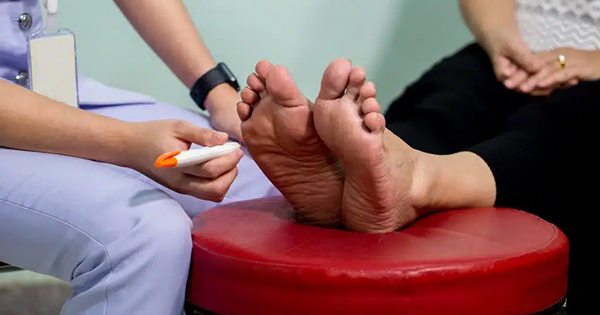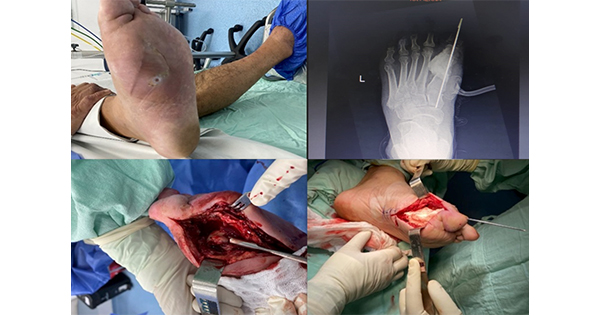Over the years, several editorials in The Diabetic Foot Journal have been devoted to addressing the need for an appropriately trained healthcare workforce specifically to manage the diabetic foot, and, in particular, the lack of formal routes of training for those identified as “diabetes specialist podiatrists” (DSP; McInnes, 2008; Rayman et al, 2000; Stuart and McInnes, 2011; Young, 2003; 2008; 2011).
In 2010, Diabetes UK and NHS Diabetes, in partnership with FDUK, undertook and published a survey attempting to gather data on those podiatrists adopting the “specialist” title, and found a predictable, yet alarming, lack of formal post-graduate training (Stuart and McInnes, 2011). How, then, has it been possible for the DSP role to have become established with any degree of credibility in the absence of what has been acknowledged as the prime pre-requisites?
In his classic text, Parkin (1979) referred to professional credentials as ensuring legitimacy, credibility, and recognition of competence, famously remarking that a “final certificate is a meal ticket for life”. While modern professionalism has been viewed as engaging in “social closure” – notably, the use of educational credentials by professions to monopolise access to rewards (e.g. high status and remuneration; Macdonald, 1995) – the advent of the DSP may be better explained by Weber’s notion of “charismatic authority” (Bacon and Borthwick, 2013). Stuart et al (2007) hinted at this when they wrote: “we can all think of a few iconic diabetes specialist podiatrists … but no one can tell us exactly how to get to their level of knowledge and skill.”
The social theorist Max Weber described three forms of social authority: traditional, rational-legal, and charismatic (Roth and Wittich, 1978). While the authority of most contemporary professions largely resides in a “rational–legal” form, governed by examinations, regulations and law, it clearly does not explain podiatric specialisation in diabetes care (Murphy, 1988; Macdonald, 1995). Charismatic authority, however, does, as it identifies the iconic figures of authority mentioned by Stuart et al (2007). It stems from the devotion shown to individual leaders who inspire loyalty and lead change. As socially respected figures, these leaders are able to influence others and shape their surroundings.
Directions given and assertions made by the charismatic leader are accepted and followed – not because they necessarily conform to rational rules or regulations, or because they adhere to what has always been done in the past (as in traditional authority), but because the assertion made is imbued with the leader’s individual authority – which is sustainable “so long as it is proved” (Weber, 1968) and, thus, believed by others to be justified (Giddens, 1971; Kalberg, 2005).
Applying this theory to the case of the DSP, it is possible to demonstrate how these iconic podiatrists were considered innovative, and that they were felt to have established specialist skills beyond those of the average practitioner. Via their interactions (with medical and non-medical colleagues), publications, and conference presentations, they attained prestige, and raised the profile of “diabetes podiatry” as a specialised field. Critically, they secured the support and acceptance of diabetologists, affording a form of vicarious legitimacy and enhanced credibility, and became the ultimate role models for aspiring podiatrists specialising in the field of diabetic foot care.
One obvious drawback to this type of authority is the matter of succession planning: what happens when the charismatic leader retires or otherwise departs the scene? Weber again provides an answer – the early disciples step up to the plate, and adopt new roles as “key leaders” and “champions”, who carry the mantle forward, and gradually begin a shift towards a more rational–legal form of authority; a process referred to as “routinisation”. It is this we are now witnessing – from the use of tools such as care pathways, to the formulation of nationally applied guidelines and policies (Diabetes UK, 2006; 2009; NHS Clinical Governance Support Team, 2006a; 2006b; NICE, 2011; 2004; SIGN, 2002).
Conclusion
It is surprising that DSPs have existed for so many years in the absence of a route for formal structured education. However, if Weber’s theory really fits the DSP example – and the authors believe it may well do so – the routinisation of the role will lead, finally, to a structured, formal route to achieving a meaningful and clearly defined entry to this specialty. Promisingly, last year’s publication of the Podiatry Competency Framework (TRIEPodD-UK, 2012) offers both hope and scope for the development of a structured pathway in education and training for podiatrists specialising in the care of the diabetic foot (McInnes, 2012; Young 2012; 2013).





